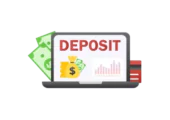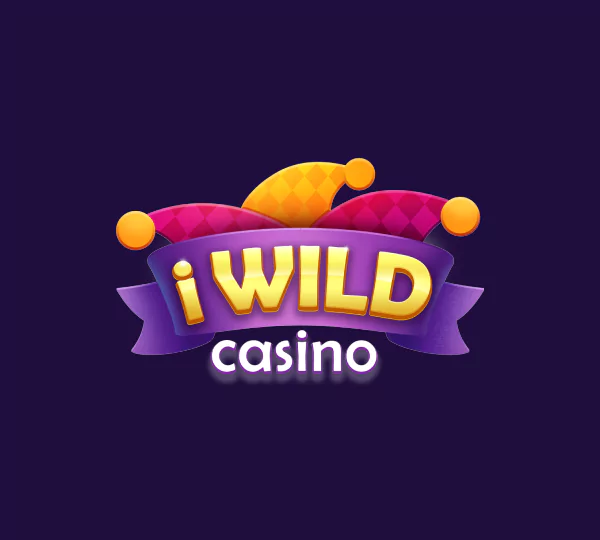Stats on the Popularity of E-wallets in Canada
Digital wallets have become the new norm. Also called a mobile wallet or e-wallet, a digital wallet is an online service or software program that enables you to make electronic payments to a merchant. Digital wallets have removed the need to carry cash every time.
Digital wallets have started long before you think they did. Coca-Cola implemented the first digital wallet solution in 1997. The company installed some vending machines in Helsinki, Finland, that accepted payments via text messages.
Then, in December 1998, the popular electronic money transfer service we now know as PayPal launched, enabling users to buy and sell goods over the Internet. Since then, many digital wallets have emerged, with Alipay, Apple Pay, Venmo, and Cash App being the most prominent ones.
Digital wallets open up more opportunities for economic growth by allowing cross-border payments and secure and fast money transfers. It also promotes financial inclusion by allowing those who are unbanked or underbanked to access various financial services.
In this article, we’ll discuss the popularity of e-wallets in Canada, touching on everything from how digital wallets work and what e-wallet options are available in Canada to the pros and cons of e-wallets and their increasing adoption worldwide.
🔧 How a Digital Wallet Works
With e-wallets, you no longer have to carry your physical wallet anywhere. Digital wallets allow you to access financial services and products using your mobile device. They also enable you to store your payment information securely in a compact device.
You need a mobile device and wireless connections, such as Bluetooth, the Internet, and magnetic signals. You can then securely transfer payment data from your mobile device to a merchant’s point of sale, which connects through these wireless capabilities to read the payment data.
Here are the technologies used by digital wallets:
🔄 How to Transfer Money Using a Digital Wallet
Making payments through digital wallets is relatively easy. You can make payments either in-store or online. The guidelines vary depending on which app you’re using, but here are the general steps you can follow.
Here are the steps for making an in-store payment:
Conversely, here are the steps for online payments:
👑 Popular Digital Wallets in Canada
Depending on your needs, there are several e-wallets in Canada from which to choose. In this section, we’ll discuss the most popular digital wallets in Canada, their fees, pros and cons, and user ratings.

🔃 Fees
There are no fees when purchasing online or in-store as long as no currency conversion is needed. However, a 5% fee is collected for international transactions.
➕ Pros
✅ Widely used worldwide
✅ Flexible payment transfer options
✅ No fees for sending money to friends and family
➖ Cons
❌ High fees on selected transactions
❌ Experienced a recent breach of user account data
❌ Slow processing time for bank transfers

🔃 Fees
Apple Pay is free for both merchants and customers. However, card processing fees may still apply.
➕ Pros
✅ Quick and easy way to make payments
✅ More secure than physical cards, even when your phone is stolen
✅ Your information is kept private
➖ Cons
❌ Not accepted by some retailers
❌ Not compatible with some banks
❌ Only available on certain Apple devices

🔃 Fees
Google Pay is generally free when you send money to friends and family, make in-store and online purchases, and receive money.
➕ Pros
✅ Easier alternative for carrying around credit cards
✅ More secure than a physical credit card
✅ Compatible with so many Android devices
➖ Cons
❌ Not accepted by some businesses
❌ Not available in some regions

🔃 Fees
Samsung Pay is completely free to use. You also gain reward points when you use Samsung Pay, which you can redeem for products in one of Samsung Pay’s retail partners.
➕ Pros
✅ Gain reward points for transactions
✅ Easy to set up
✅ Works at all credit card POS in the US
✅ Option to manage your money
➖ Cons
❌ The interface design could be more user-friendly
❌ No option to send money to friends and contacts
❌ Can’t pay from a web browser

🔃 Fees
Interac e-Transfer is a low-cost service that charges minimal fees.
➕ Pros
✅ Near instant transfers
✅ Minimal information needed for transfers
✅ Uses established banking procedures
✅ Available at most Canadian banks and credit unions
➖ Cons
❌ Limited transfer amounts
❌ Potential for scams
❌ Transfers are only available between Canadian bank accounts

🔃 Fees
They vary depending on transaction type, currency conversion, and account level. Free account options have limited features.
➕ Pros
✅ Has app and web versions
✅ Offers virtual cards for added security
✅ Multiple account tiers with varying features and fees
✅ Ideal for online gambling
➖ Cons
❌ Complex fee structures
❌ Not as widely accepted as some payment methods
❌ Free accounts have limitations
Here are the user satisfaction ratings of various digital wallets:
| Digital Wallet App | Google Playstore Rating | App Store Rating | Capterra Rating |
| PayPal | 4.3/5 | 4.8/5 | 4.7/5 |
| Apple Pay | N/A (Pre-installed on iOS) | 4.8/5 | 4.7/5 |
| Google Pay | 4/5 | 4.7/5 | 4.6/5 |
| Samsung Pay | 4.3/5 | 4.5/5 | 4.5/5 |
| INTERAC e-Transfer | N/A (No app version) | N/A (No app version) | N/A (No review available) |
| Payz | 3.8/5 | 2.1/5 | N/A (No review available) |
👉 How to Get a Digital Wallet
Here’s a breakdown of how to get started with digital wallets and enjoy the world of cashless payments.




Now, let’s look at some specific examples.






📲 How to Use a Digital Wallet
Digital wallets are straightforward and user-friendly. To start, you must open the app, which may require entering a password, PIN, or biometric login. The next steps would then depend on which digital wallet you’re using and where you want to make the payment, whether it’s online or in-store.
Online vs. In-store Payments
The steps vary depending on whether you’re paying online or in-store. Let’s start with the steps for online payments.
Now, let’s outline the steps for making payments in-store.
💳 How to Make Payments Using Major E-Wallets in Canada
To ensure a seamless and hassle-free transaction, we’ll outline the steps to making payments using the major players in the digital wallet space in Canada.






📊 Statistics on the Popularity of E-wallets in Canada
E-wallets have become increasingly popular in Canada, reflecting a shift towards digital and contactless payments. This section explores the latest statistics on the usage, transaction volumes, growth rates, and market share of e-wallets among Canadians.
- In the first half of 2023, 51% of Canadian consumers used their mobile wallets for in-store purchases. (RFI Global)
- 31% of Canadians believe that the biggest benefit of digital wallets is not having to carry around physical cards. (RFI Global)
- In the first half of 2023, 32% of Canadian consumers use mobile wallets daily, while 37% use them a few times weekly. (RFI Global)
- Eight of 10 Canadians use PayPal for online payments, while three out of 10 indicate using it for in-store purchases. (Statista)
- 22% of Canadians expect to use PayPal more in the next 12 months. (RFI Global)
- 47% of Canadian consumers used Apple Pay for in-store purchases, while 39% used it online. (PaymentsJournal)
- 31% of consumers in Canada used Google Pay for in-store purchases, while 43% used it for online purchases. (PaymentsJournal)
- 19% of Canadian consumers use Samsung Pay to pay for in-store purchases, while 27% use it online. (PaymentsJournal)
- In 2023, 20% of Canadian consumers use mobile payments at POS settings. (Statista)
- Next to credit cards, digital wallets are the second most used digital payment among Canadian shoppers. (Ayden, Statista)
- Since the COVID-19 pandemic, 7% of Canadian consumers say they’ve started using Interac e-Transfer more, 58% say their usage is about the same, and 35% say they’re using it less. (Payments Canada)
- Similarly, since the pandemic, 14% of Canadian shoppers have started using PayPal more, 65% are using it just about the same, and 21% are using it less. (Payments Canada)
- 45% of Canadians who used their mobile wallet for in-store purchases state they have been using it more since the pandemic hit. (Payments Canada)
- The number and value of mobile payments grew by 17% and 31% from 2020, respectively. (Payments Canada)
- Among the digital wallet users in Canada, 66% said that the COVID-19 pandemic pushed them towards digital payment methods and away from cash. (GetApp)
⚖️ Comparison of Digital Wallets
Here’s a table comparing the features of significant industry players to help you decide which digital wallet to buy.
| Digital Wallet | Security | User-friendliness | Fees | Acceptance | Special Features |
| PayPal | Passkeys, 24/7 fraud monitoring, data encryption, key pinning, email payment confirmations | Intuitive interface, widely recognised and used | No fees for in-store or online purchases, 5% fee for international transactions | Widely accepted by online retailers, some physical stores | One Touch, credit card rewards, Buyer Protection, third-party integrations |
| Apple Pay | Biometric authentication (Face ID, Touch ID), encryption, device-specific tokens | Integrated with Apple devices, easy to use | Card processing fees | Accepted at many retail locations and online stores | Integration with Apple ecosystem |
| Google Pay | Built-in protection, Google Find My Device to lock your device remotely, data privacy | Simple setup, easy integration with Google ecosystem | Generally free | Similar to Apple Pay, accepted at several retail locations and online stores | Integrations with Splitwise, other apps, and Google services, loyalty card and passes |
| Samsung Pay | Card information encryption, fraud protection covered by your bank, biometric authentication (fingerprint, iris scan, or PIN) | Easy to use on Samsung devices, supports both NFC and MST | Completely free | Accepted at many retail locations | Magnetic Secure Transmission (MST) for broader compatibility, cash back rewards |
| Payz | Two-step verification, SSL encryption | Easy to use, deposit funds and make transfers easily | Varied fees depending on transaction type, currency conversion, and account level | Accepted by many online casinos and merchants | Payz Plus debit card, multi-currency accounts, account levels, multi-lingual customer support |
| Interac e-Transfer | Bank-grade security with encryption, secure online authentication | Integrated with Canadian bank accounts | Charges minimal fees | Widely used in Canada for personal and business transactions | Interac e-Transfer Request Money and Autodeposit |
☝ How to Choose a Digital Wallet
Digital wallets are generally secure and convenient. However, to maximise its features, you must choose one that best suits your needs. Here are some factors you need to look into:




🙌 Pros and Cons of Digital Wallets
Digital wallets offer a convenient and secure way to manage your finances, but they have advantages and disadvantages. Let’s explore the key pros and cons to help you decide whether a digital wallet is right for you.
- ✅ Convenience: Gone are the days when you must use cash to make purchases. A digital wallet makes purchasing easier.
- ✅ Enhanced Security: Digital wallet companies have implemented robust security features to secure your financial data.
- ✅ Fast Transactions: Unlike online banking payments, e-wallet transactions often take minutes to complete.
- ✅ Rewards and Cashback: For example, Samsung Pay allows you to earn rewards every time you make payments through the app.
- ❌ Dependency on Technology: When you don’t have internet access, or your phone battery dies, you can’t make payments.
- ❌ Security Risks: The downside of any digital technology is the risk of hacks and data breaches. To mitigate such risks, implement certain measures to safeguard your data. For example, assign strong passwords and enable multi-factor authentication.
- ❌ Limited Acceptance in Some Regions or Stores: Some merchants don’t accept e-wallets as payment. Also, some e-wallets aren’t available in some regions. For example, Cash App isn’t available in Canada but only in the US and the UK.
- ❌ Potential Fees: Some digital wallets charge hefty fees. For example, we know that PayPal has higher transaction fees than other payment methods. Do your research beforehand.
🤔 Are Digital Wallets Safe?
The convenience that digital wallets offer is undeniable. However, security is of utmost importance. Here are some ways these apps keep your financial information safe:
Here’s a table comparing the security features of major digital wallets in Canada.
| Encryption | Multi-Factor Auth. | Biometric Auth. | Fraud Detection |
| PayPal | ✅ | ✅ | ✅ |
| Apple Pay | ✅ | ✅ | ✅ |
| Google Pay | ✅ | ✅ | ✅ |
| Samsung Pay | ✅ | ✅ | ✅ |
| Interac | ✅ | Depends on the bank’s policy | Depends on the bank’s policy |
| Payz | ✅ | ✅ | ✅ |
📈 Increasing Adoption of Digital Wallets in Canada and Worldwide
The COVID-19 pandemic has pushed Canadian shoppers to use digital payments more. However, beyond that, Canadians have shifted towards digital payments due to their convenience and security.
Check out the growth of digital wallet usage in Canada from 2016 to 2023.

🔗 Source: RFI Global
It’s evident in the following graph that PayPal is the most widely used digital payment platform. See how others fare:

🔗 Source: PaymentJournal, Statista
🚀 Conclusion
It’s evident in the statistics that the popularity of e-wallets has increased significantly in Canada. Prominent services include PayPal, Samsung Pay, Apple Pay, Google Pay, Payz, and Interac e-Transfer.
The COVID-19 pandemic impacted how Canadian consumers pay for goods and services, moving towards digital and contactless payments. However, the upward trend in digital wallet usage is also driven by technological advancements, security, convenience, regulatory support, and enhanced user experience.
The bottom line is that most people don’t want to carry cash anymore, and digital wallets provide a great solution to cater to this preference.
References:
- Apple.com
- Apple Support
- Apple Support
- Apple Support
- Biometric Update
- Digipay
- Google Pay
- Google Support
- Google Support
- Interac
- Interac
- Interac
- Investopedia
- NerdWallet
- NerdWallet
- PayCEC
- Payments Journal
- PayPal
- PayPal
- PayPal
- PayPal
- Payz.com
- Pismo.io
- RFI Global
- Samsung
- Samsung
- Samsung
- Statista
- Synder
- TIME
- Wikipedia








